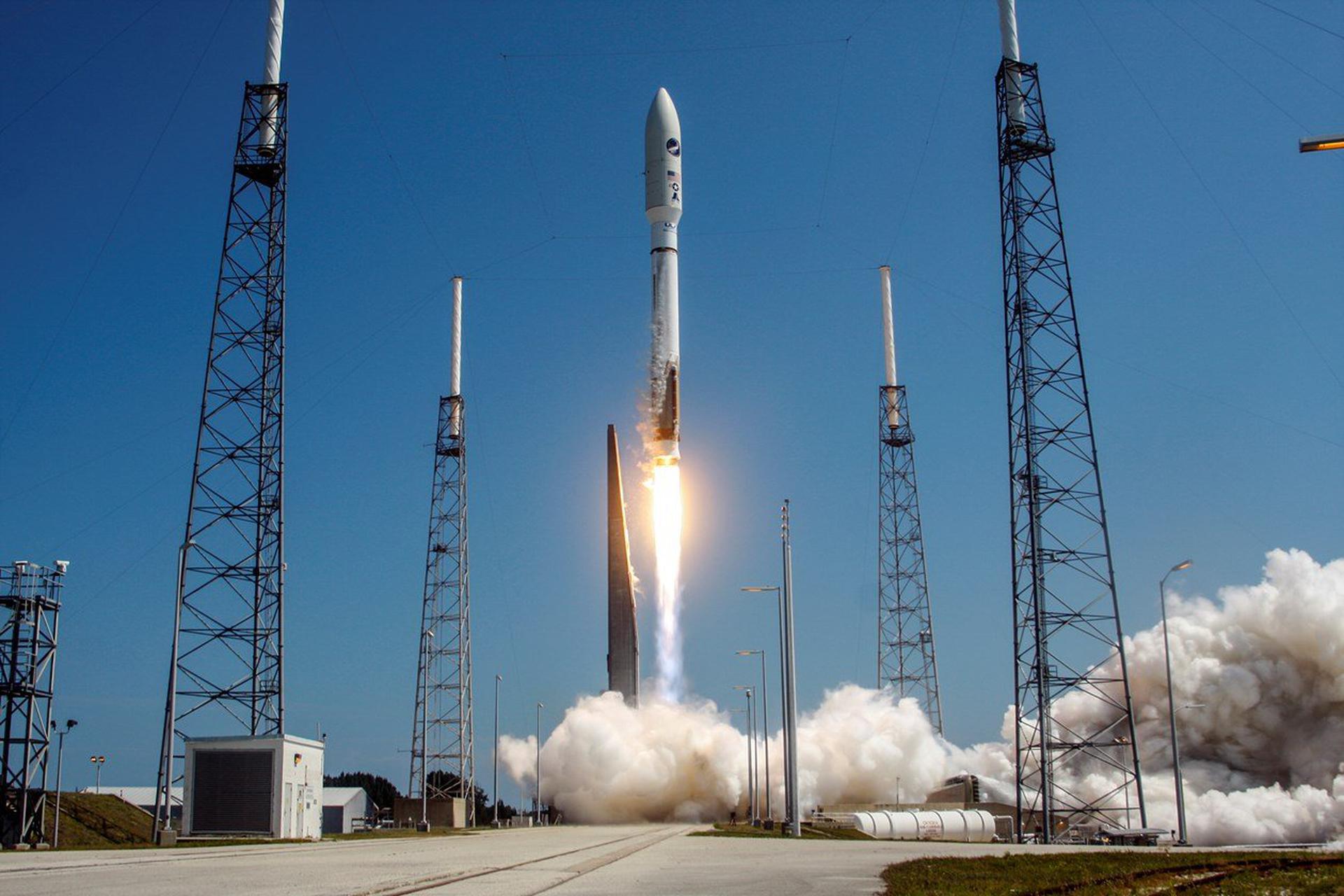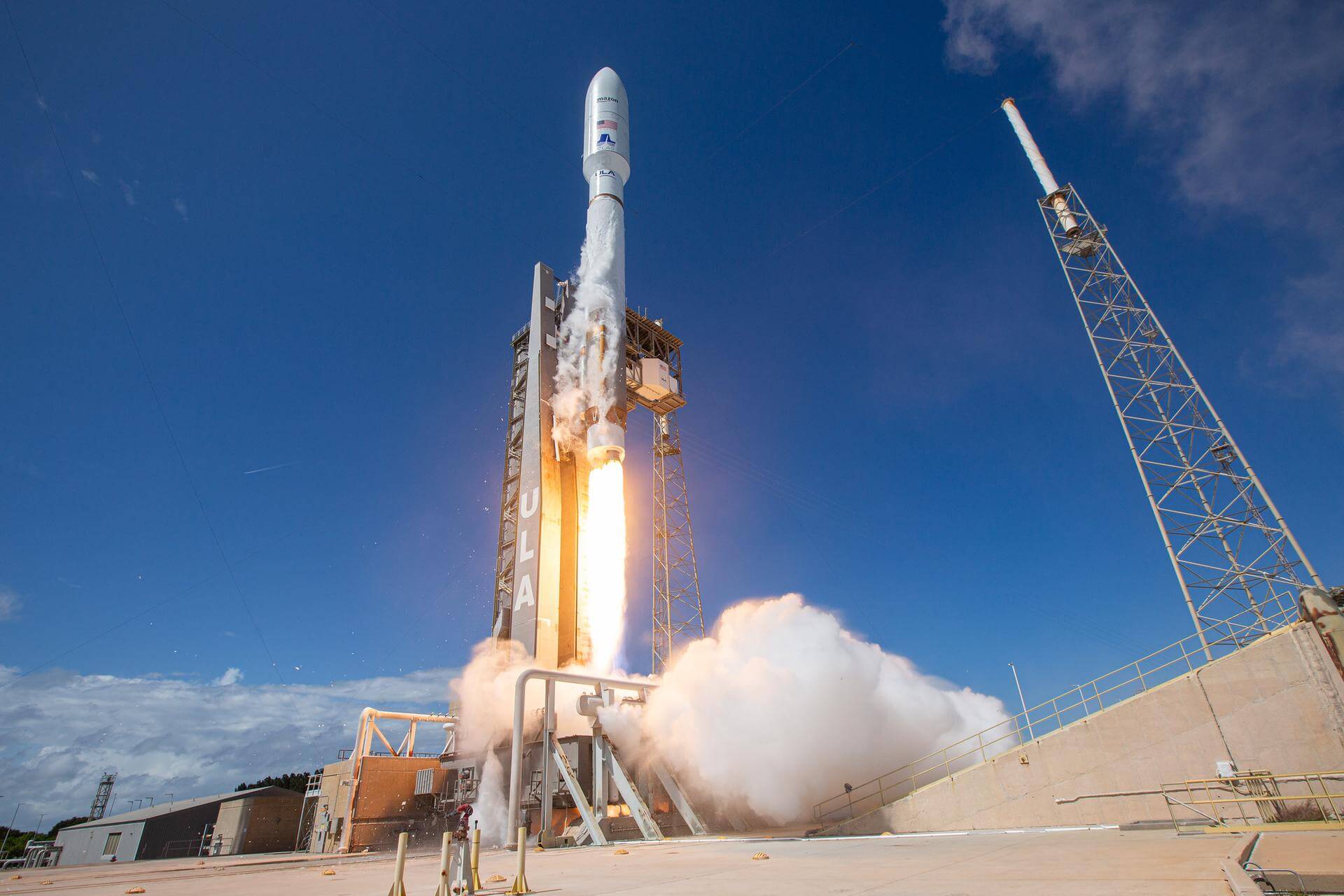
Atlas V 501
ActiveUnited Launch Alliance (ULA)
April 22, 2010
Description
Atlas V with 5m Fairing, 0 SRB, 1 Centaur upper stage engine.
Specifications
-
Minimum Stage
1 -
Max Stage
2 -
Length
58.3 m -
Diameter
3.8 m -
Fairing Diameter
5.4 m -
Launch Mass
334.0 T -
Thrust
3827.0 kN -
Apogee (Sub-Orbital)
40000.0 km
Family
-
Name
Atlas V 501 -
Family
― -
Variant
501 -
Alias
― -
Full Name
Atlas V 501
Payload Capacity
-
Launch Cost
$120000000 -
Low Earth Orbit
8210.0 kg -
Geostationary Transfer
Orbit
3780.0 kg -
Direct Geostationary
― -
Sun-Synchronous Capacity
―
United Launch Alliance
Commercial
Interim CEO: John Elbon
ULA 2006United Launch Alliance (ULA) is a joint venture of Lockheed Martin Space Systems and Boeing Defense, Space & Security. ULA was formed in December 2006 by combining the teams at these companies which provide spacecraft launch services to the government of the United States. ULA launches from both coasts of the US. They launch their Atlas V vehicle from LC-41 in Cape Canaveral and LC-3E at Vandeberg. Their Delta IV launches from LC-37 at Cape Canaveral and LC-6 at Vandenberg.
Atlas V 501 | Amazon Leo (Project Kuiper) Protoflight Mission
United Launch Alliance | United States of AmericaCape Canaveral SFS, FL, USA
Oct. 6, 2023, 6:06 p.m.
Status: Launch Successful
Mission:
This launch deployed 2 KuiperSat demonstration satellites to 500 km altitude, 30 degree inclination orbit. They were previously scheduled on the 1st Vulcan launch. Amazon Leo, formerly known as Project Kuiper, is a mega constellation of satellites in Low Earth Orbit that will offer broadband internet access, this constellation will be managed by Kuiper Systems LLC, a subsidiary of Amazon. This constellation is planned to be composed of 3,276 satellites. The satellites are projected to be placed in 98 orbital planes in three orbital layers, one at 590 km, 610 km and 630 km altitude.
Low Earth OrbitAtlas V 501 | OTV-6 (X-37B) (USSF-7)
United Launch Alliance | United States of AmericaCape Canaveral SFS, FL, USA
May 17, 2020, 1:14 p.m.
Atlas V 501 | OTV-4 (X-37B) (USA 261) (AFSPC-5) & ULTRASat cubesat deployer
United Launch Alliance | United States of AmericaCape Canaveral SFS, FL, USA
May 20, 2015, 3:05 p.m.
Status: Launch Successful
Mission:
It is the second flight of the second Boeing X-37B vehicle and the fourth flight of the program. United States Air Force Orbital Test Vehicle is an unmanned 5000 kg, 8.8 m-long reusable mini-spaceplane capable of autonomous re-entry and landing. The OTV-4 mission was to test Aerojet Rocketdyne's XR-5A Hall-effect thruster and conduct a NASA investigation for testing various materials in space. The mission concluded after 717 days in orbit, marking the first time X-37B landed on the Shuttle Landing Facility at the Kennedy Space Center.
Low Earth OrbitAtlas V 501 | NROL-39 (USA-247)
United Launch Alliance | United States of AmericaVandenberg SFB, CA, USA
Dec. 6, 2013, 7:14 a.m.
Atlas V 501 | OTV-3 (X-37B) (USA-240)
United Launch Alliance | United States of AmericaCape Canaveral SFS, FL, USA
Dec. 11, 2012, 6:03 p.m.
Status: Launch Successful
Mission:
It is the second flight of the first Boeing X-37B vehicle and the third flight of the program. United States Air Force Orbital Test Vehicle is an unmanned 5000 kg, 8.8 m-long reusable mini-spaceplane capable of autonomous re-entry and landing. The specific identity of the spaceship's payload or the mission objectives were not revealed. The mission concluded after 674 days in orbit.
Low Earth OrbitAtlas V 501 | OTV-2 (X-37B) (USA-226)
United Launch Alliance | United States of AmericaCape Canaveral SFS, FL, USA
March 5, 2011, 10:46 p.m.
Status: Launch Successful
Mission:
It is the first flight of the second Boeing X-37B, a United States Air Force Orbital Test Vehicle 2, which is an unmanned 5000 kg, 8.8 m-long reusable mini-spaceplane capable of autonomous re-entry and landing. The OTV-2 mission was designed to test new technologies, however the specific identity of the spaceship's payload was not revealed. The mission concluded after 468 days in orbit.
Low Earth OrbitAtlas V 501 | NROL-41 (USA-215)
United Launch Alliance | United States of AmericaVandenberg SFB, CA, USA
Sept. 21, 2010, 4:03 a.m.
Atlas V 501 | OTV-1 (X-37B) (USA 212)
United Launch Alliance | United States of AmericaCape Canaveral SFS, FL, USA
April 22, 2010, 11:52 p.m.
Status: Launch Successful
Mission:
It is the first flight of Boeing X-37B, a United States Air Force Orbital Test Vehicle, which is an unmanned 5000 kg, 8.8 m-long reusable mini-spaceplane capable of autonomous re-entry and landing. The OTV-1 mission was designed to test new technologies, however the specific identity of the spaceship's payload was not revealed. OTV was the first vehicle since NASA's shuttle orbiter capable of returning experiments to Earth for further inspection and analysis. The mission concluded after 224 days in orbit, marking the first American autonomous orbital runway landing.
Low Earth OrbitSoyuz 2.1a
Obzor-R No.1
43/4 (43R) - Plesetsk Cosmodrome, Russian FederationNote: Assignment of payloads to this launch is uncertain. The Russian Obzor-R satellite is a planned X-band radar earth observation satellite desi…
LVM-3 (GSLV Mk III)
BlueBird Block 2 #1
Satish Dhawan Space Centre Second Launch Pad - Satish Dhawan Space Centre, IndiaAST SpaceMobile’s Block 2 BlueBird satellites are designed to deliver up to 10 times the bandwidth capacity of the BlueBird Block 1 satellites, requi…
Long March 12A
Demo Flight
Long March 12A Pad - Jiuquan Satellite Launch Center, People's Republic of ChinaFirst test launch of CASC/SAST’s Long March 12A rocket, with a dummy payload. The rocket’s 1st stage attempted to land on a landing pad about 300 km …
HANBIT-Nano
Spaceward
HANBIT Pad - Alcântara Space Center, Federative Republic of BrazilMaiden orbital launch attempt for the South Korean start-up Innospace and its HANBIT-Nano small launch vehicle. Onboard this flight are five small sa…
H3-22
Michibiki 5 (QZS-5)
Yoshinobu Launch Complex LP-2 - Tanegashima Space Center, JapanQZSS (Quasi Zenith Satellite System) is a Japanese satellite navigation system operating from inclined, elliptical geosynchronous orbits to achieve o…


